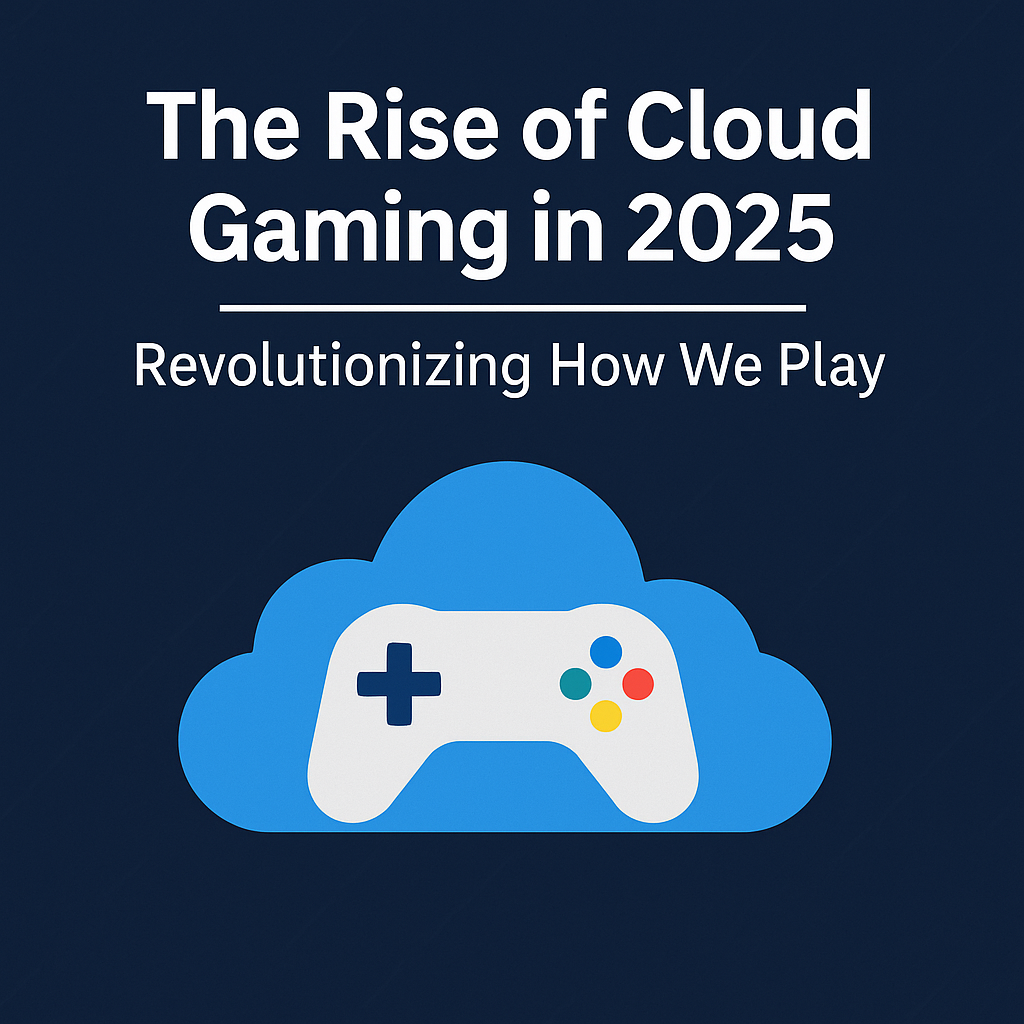Introduction
Gaming has come a long way from cartridges and CDs to digital downloads and multiplayer experiences. But in 2025, we’re witnessing a new era—cloud gaming. This emerging trend is reshaping the way we play, removing the need for high-end hardware and enabling gaming on-the-go like never before. As internet speeds improve and tech giants invest billions, cloud gaming is becoming more accessible, powerful, and immersive.
In this post, we’ll dive deep into what cloud gaming is, how it’s evolving in 2025, the major players in the space, the pros and cons, and whether it’s truly the future of gaming.
What is Cloud Gaming?
Cloud gaming (also known as game streaming) is the ability to play video games using remote servers in data centers. Rather than downloading or installing the game on a local device like a PC or console, the game runs in the cloud, and only the video stream is sent to the user’s screen. Think of it like Netflix—but for games.
This means users can play high-end titles on a low-spec device, as long as they have a stable and fast internet connection.
Why 2025 is a Turning Point
While cloud gaming has been in development for over a decade, 2025 is turning out to be a game-changer due to several reasons:
- 5G and Fiber Internet: Improved connectivity makes game streaming smoother with lower latency.
- Edge Computing: Placing servers closer to users reduces lag.
- Cross-platform integration: Seamless play across PC, console, tablet, and smartphones.
- AI-enhanced rendering: Smarter optimization makes cloud gaming more efficient.
- Subscription models: Netflix-style gaming services are attracting casual and hardcore gamers alike.
Top Cloud Gaming Services in 2025
- Xbox Cloud Gaming (xCloud)
Integrated with Xbox Game Pass, xCloud continues to dominate with hundreds of titles and global infrastructure. - NVIDIA GeForce NOW
Known for performance and compatibility with Steam and Epic Games, GeForce NOW allows gamers to bring their own library. - Amazon Luna
Expanding globally with a competitive library and Twitch integration, Luna is becoming popular among casual gamers. - PlayStation Cloud (formerly PS Now)
Sony revamped its service in 2025 with broader device support and deeper integration with the PlayStation ecosystem. - Google CloudPlay (rebooted after Stadia)
Google returned to cloud gaming with a better strategy and partnerships with major developers.
Advantages of Cloud Gaming
- No Need for Expensive Hardware: You can play AAA games on a smartphone or Chromebook.
- Instant Access: No downloads, no updates—just click and play.
- Cross-device Continuity: Start a game on your TV, continue on your tablet.
- Sustainable: Reduces e-waste and energy use compared to consoles/PCs.
- Demo and Trial-Friendly: Try games instantly without large installs.
Challenges and Limitations
Despite its progress, cloud gaming isn’t perfect:
- Latency Issues: Fast-paced FPS or competitive eSports titles still need ultra-low latency, which some services struggle to offer.
- Data Consumption: Streaming high-res games can eat up a lot of bandwidth—around 10-15GB per hour.
- Internet Dependency: No internet = no games. Offline play is impossible.
- Limited Ownership: Subscription models often don’t let you “own” the game, unlike traditional downloads.
Cloud Gaming vs Traditional Gaming
| Feature | Cloud Gaming | Traditional Gaming |
|---|---|---|
| Hardware Needed | Minimal | High-end PC/Console |
| Initial Cost | Low | High |
| Game Access | Subscription-Based | Buy & Download |
| Latency | Depends on Internet | Generally Low |
| Portability | Very High | Limited |
| Offline Access | No | Yes |
Cloud gaming won’t completely replace traditional gaming in 2025—but it’s certainly creating an alternative path, especially for new gamers and mobile-first users.
Impact on Game Development
Game developers in 2025 are increasingly optimizing for cloud platforms, designing games that are:
- Lighter and scalable
- Playable on any screen size
- Built with streaming in mind
Studios are also experimenting with AI-generated content, dynamic in-game ads, and live updates—all made easier with cloud infrastructure.
Cloud Gaming in India: A Growing Market
India’s rapidly improving mobile internet and youth-driven gaming culture make it an emerging hub for cloud gaming. Services like JioGamesCloud and local cloud servers are being tested and rolled out in metro cities, giving Indian gamers new ways to enjoy top-tier games without expensive setups.
Is Cloud Gaming the Future?
It’s clear that cloud gaming is no longer just a concept—it’s a mainstream alternative. While it won’t completely replace consoles or gaming PCs in the near term, it’s carving out its niche with convenience, affordability, and flexibility. As infrastructure continues to improve and game studios adapt, expect cloud gaming to dominate casual and mobile platforms.
Whether you’re a hardcore gamer or just someone who enjoys the occasional match of Fortnite or FIFA, cloud gaming is worth exploring in 2025.
Conclusion
Cloud gaming in 2025 is more than a tech trend—it’s a revolution in accessibility and convenience. While not without its challenges, the progress made in the last few years is impressive. With more competition, better infrastructure, and growing user interest, we’re only at the beginning of what cloud gaming can become.
Ready to play without limits? The future is already streaming.






